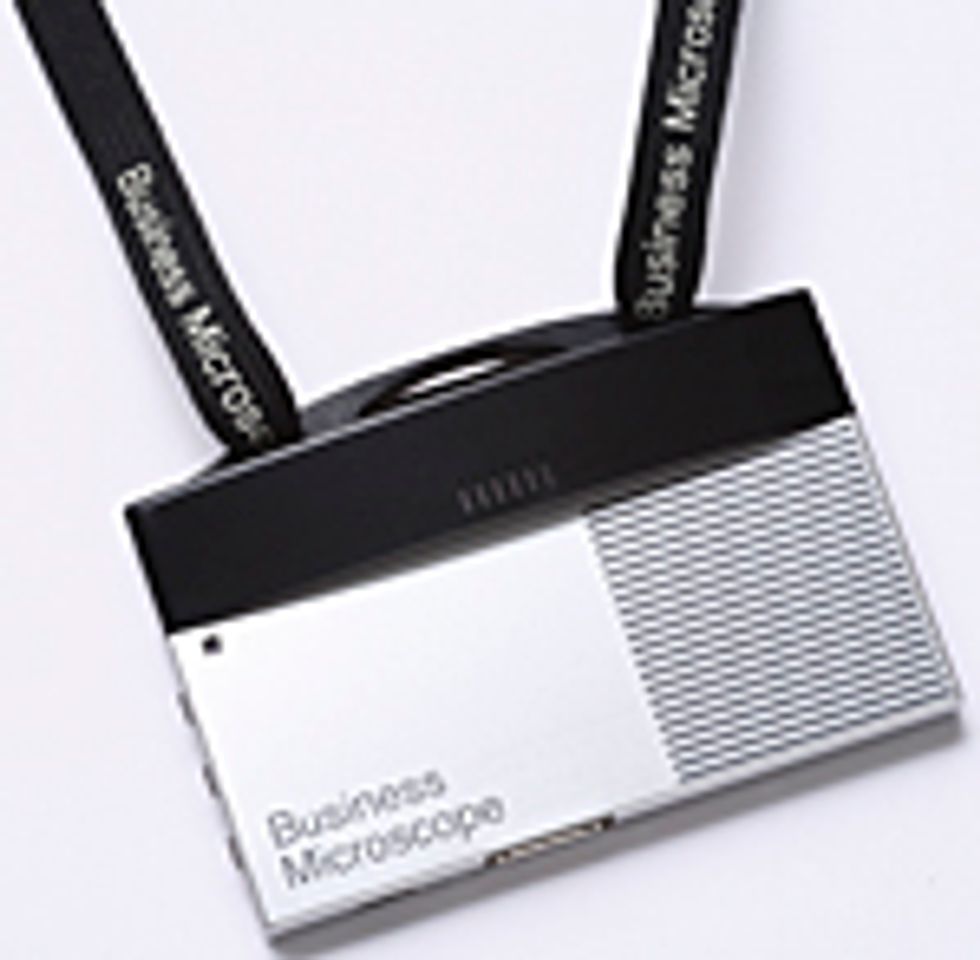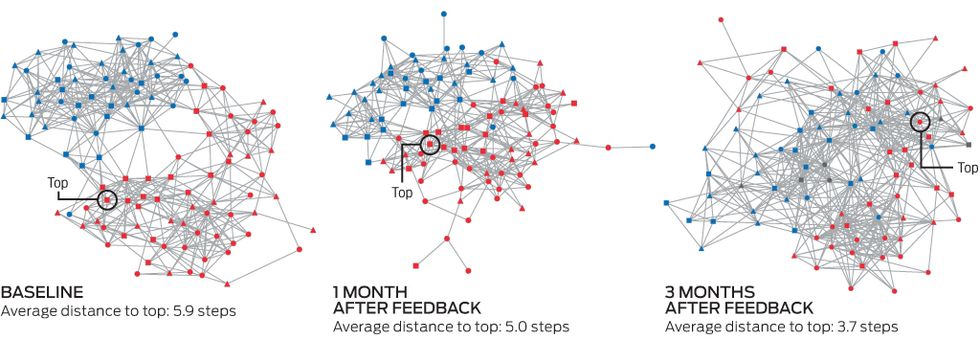Can Technology Make You Happy?
Yes, and it can make your office a better place to work, too

The unmanageable in-box, the cellphone and laptop that keep you electronically tethered to the office, the endless 30-second distractions from incoming e-mail and text messages. Sound familiar? The same advances in computers and telecommunications that have brought about tremendous gains in productivity have also made the work lives of professionals a misery. No wonder that these days many people’s dream vacations include thoughts of tossing their mobile phones into a mountain stream and fully unplugging.
But what if instead of creating stress, technology made people enjoy life more?
Engineering happiness is not as radical as it sounds. Over the last decade, engineers, computer scientists, psychologists, and other researchers have shown they can do just that. Specifically, by monitoring and analyzing a person’s sleep patterns, exercise and dietary habits, and vital statistics like body temperature, blood pressure, and heart rate, they can pinpoint trouble spots in the person’s daily routine and then suggest modifications that measurably improve that individual’s outlook and well-being. Building on those studies, a range of consumer products now on the market let you try those things at home, with the ultimate goal of making you healthier and happier. [“How I Quantified Myself,” in the September 2012 issue of IEEE Spectrum, looked at several such gadgets.]
The same kind of technology that’s helping people improve their personal lives can yield positive results in the workplace: better communication, better teamwork, and greater job satisfaction on all levels of the organization. Perhaps most intriguing, it can help workers achieve that satisfying feeling of being fully immersed in, energized by, and happy about whatever they are doing. Seem too good to be true? In fact, it’s perfectly possible, and it isn’t magic. But to achieve the best results takes the proper mix of engineering and psychology.
From the technology side, what’s driving this activity is the convergence of three trends: miniaturization, wireless communication, and better batteries. With off-the-shelf hardware you can readily build a small sensor that can record gigabytes of behavioral data yet weighs just a few tens of grams, so it doesn’t impose a burden on the user or disrupt daily activities.
In the early 2000s, MIT professor Alex (“Sandy”) Pentland was one of the first researchers to propose using wearable sensors to study people’s well-being. Back then, conventional wisdom held that the best way to measure a person’s state of mind was to use interviews or written surveys. But it turns out that the vast majority of human communication isn’t verbal. Nonverbal cues such as intonation, posture, and gestures can be much more important than formal language. Let’s say you’re listening to a coworker: Even if you don’t say a word, your facial expressions will quickly reveal whether you’re interested, bored, or downright dissatisfied.
Pentland’s idea was to use a wearable sensor containing microphones, accelerometers, and infrared transmitters, which he called the sociometer [PDF], to detect the pitch of a person’s voice as well as his or her movements and thereby gain a window into the wearer’s experiences, social patterns, and quality of communication. At the time, however, electronic technology wasn’t quite up to the task. Early sensors weighed nearly 200 grams and didn’t have much storage or processing heft or a very long battery life.
Subsequently, Pentland’s team collaborated with one of us (Yano) and his group at Hitachi to extend the usefulness of these devices. Hitachi then commercialized the units and incorporated them into a sociometric sensor called the Business Microscope, which it released in 2009.
In its latest incarnation, the Hitachi Business Microscope (HBM) is about the size of a name tag and weighs a mere 33 grams. You wear it around your neck on a lanyard, as you would a name badge at a conference. Inside its plastic case are six infrared transceivers, an accelerometer, a flash memory chip, a microphone, a wireless transceiver, and a rechargeable lithium-ion battery that allows the badge to operate for up to two days at a time.
The HBM measures the wearer’s body movements and voice level, as well as the ambient air temperature and illumination. It tallies body movements—including head nods, arm waving, stretching, finger pointing, and other nonverbal communication—much as a pedometer counts a person’s steps. That is, the accelerometer measures each motion in the x, y, and z axes. Later those measurements are translated into a single value that indicates the degree to which you are moving about in space.
The sensor can tell when two or more wearers are in close proximity using its six infrared transceivers, which point in different directions to cover a wide area in front and to the sides of the wearer. When these transceivers detect another badge within 2 meters, the two badges exchange IDs. Each badge then records the time, duration, and location of the interaction. To determine location, the badge listens for signals from the nearest “beacon,” an infrared apparatus that constantly broadcasts its location ID; beacons are strategically placed around the space that’s being monitored—on conference room tables, users’ desks, and so on. Each badge’s small LCD screen displays the time, temperature, the number of other HBM wearers you’ve met that day, and how physically active you’ve been.
The badge also collects information about the types of exchanges that take place. For example, sitting with colleagues in a conference room listening to a presenter drone on for hours is very different from having an animated conversation around the coffee machine. The HBM can discern that difference, again by monitoring people’s movements and measuring the energy level of their voices.
Before leaving the office each day, a user places the badge in a “cradle,” which recharges the battery and also downloads the stored information. These measurements are transmitted over the Internet to Hitachi’s data center for analysis and long-term storage. Periodically, the system provides users with reports on the activities that are being monitored.
Since the HBM’s introduction three years ago, hundreds of organizations, including banks, information service companies, design firms, research institutes, call centers, and hospitals, have used it to collect about 10 terabytes of behavioral data, amounting to half a million person-days. Of course, understanding people’s subjective experience requires more than just recording how they move or to whom they talk. And to make sense of all those data, you need a scientific framework of human behavior.
Each person has his or her own motivations, feelings, and goals—all of which affect behavior. But these underlying factors may not necessarily be apparent to casual or even trained observers. Does a person’s erratic movements indicate distress or giddiness? Do fewer than the normal number of social interactions one day mean that a person is depressed, or just engrossed in an engaging activity? Engineers need a way of distilling sensor data into meaningful mental states.
For that, we turn to the emerging field of positive psychology. Unlike traditional psychology, which focuses on problems—stress, depression, anxiety, obsessions, and mood swings, to name a few—positive psychology looks at desirable mental states (including happiness) and sought-after character traits (such as self-control and generosity), as well as the internal and external factors that contribute to well-being.
You might think that happiness is something ineffable, an elusive state of being that defies quantification and analysis. But over the past decade, one of us (Lyubomirsky) and her collaborators at the University of California, Riverside, have conducted many studies that demonstrate that happiness can, in fact, be systematically measured.
These findings can be counterintuitive. For example, most of us tend to believe we will be happier when we marry, buy a house, or get a raise. It turns out, though, that such external circumstances contribute in only a small way to our long-term level of happiness. Likewise, many people suppose that a relationship setback, professional failure, or financial crisis will make them much more unhappy than it actually does. It turns out that most people adapt to both positive and negative circumstances much faster than they expect.
What does make a difference in happiness are people’s habits and activities. Even simple actions like expressing gratitude and performing acts of kindness can make you feel measurably better. The conclusion? Changing activities, rather than fixating on ideal circumstances, is the best way to boost happiness [PDF].
The benefits of happiness [PDF] go beyond just feeling good. In 2005, Lyubomirsky and her colleagues documented how happiness and positive feelings improve people’s personal and professional lives. For example, happy people tend to be more creative, are more productive at work, and go on to earn higher salaries. You read that right: Getting a raise won’t make you happier, but if you’re already happy, more money is likely to come your way as a side benefit. Hard statistics about these positive outcomes—higher salaries, better performance evaluations, and greater longevity—help win over skeptics to the value of happiness research.
In the workplace, one manifestation of being happy is your ability to achieve a state of full engagement, or “flow,” a term psychologist Mihaly Csikszentmihalyi at Claremont Graduate University, in California, coined to describe this phenomenon. When it happens, hours pass by like minutes, and you forget about outside worries. Nearly everyone experiences flow at some point or another, including knowledge workers such as engineers and scientists, whose jobs require a great deal of focused creativity and problem solving. As it turns out, technology can help identify this cherished state of mind.
In one small but intriguing study, Yano, his colleague Koji Ara, and Csikszentmihalyi looked at whether you could quantify when people had reached that special state of being “in the zone” [PDF]. In this experiment, participants were asked to keep a diary of their feelings and corresponding activities throughout the day. Their HBM data—particularly the rhythm of their movements as measured by the accelerometers—were then compared with their diaries. There was no one movement or one type of activity that corresponded to a state of flow, nor was there a particular time of day during which workers were better able to focus intensely in this way. And that makes sense, given people’s individual styles and quirks.
The key indicator of flow turned out to be consistency in movement. For some people, that consistent movement was slow; for others it was fast. Some were morning people; others favored the afternoon or evenings. Regardless, when participants experienced flow, their motions became more regular, as they lost themselves in a challenging but engrossing activity. When they compared their HBM data to their daily diaries, participants were often surprised to see that their mental state had such an obvious digital signature. Once people became aware of their daily patterns, they could better schedule their work to take advantage of times when they were most likely to be in this mental state.
A more straightforward yet illuminating way that we’ve used wearable sensors in the workplace is to document social interactions. You can, for example, examine which locations in an office tend to host the most frequent and active discussions, and which areas are underused or prone to passive interactions. Restructuring the office layout based on such results might well lead to more fruitful collaborations.
In many cases, these sociometric data reveal very different patterns of communication than what you might infer from a company’s organizational chart. Let’s say you’re trying to gauge the effects of a corporate merger. Ideally, you want the two companies to become completely integrated, despite what may have been different cultures and work processes. Sensor data can tell you the extent to which what were formerly two groups are actually coming together, because they show who really talks with whom and how often.
In one early experiment, the HBM was used to study the merger of two product-design units within a company. One month after the combination, the resultant group remained for the most part two separate entities. Even the head of the group at first continued to interact mainly with his old coworkers. Indeed, things were so bad that there were a full six degrees of conversational separation between an average worker and the big boss. That’s rather shocking, considering that about the same number of steps of acquaintanceship separate any two people chosen at random, a phenomenon that social psychologist Stanley Milgram first studied in the 1960s (and that later spawned the party game “Six Degrees of Kevin Bacon”).
So how can such a dysfunctional office work better? As part of this experiment, managers and employees received regular sociometric reports that included diagrams showing who was talking to whom, and everyone was encouraged to make adjustments to bring people together. By the end of the three-month experiment, the head of the group and others were collaborating much more closely with their new coworkers, and the social hierarchy had flattened out. What’s more, workers were reporting greater satisfaction and productivity.
In another small study (the first collaboration among the three of us), we looked at boosting worker satisfaction. We also measured people’s movements to see if there was any correlation between happiness and physical activity. Our study, conducted over a six-week period, involved a Japanese office with 32 employees. Half of the participants practiced a happiness-boosting exercise—namely, writing down three positive things that had happened that week at work. The remaining participants merely listed work tasks they had completed that week. To control for the placebo effect, all the participants were told that their assignment was designed to make them happier.
Relative to the control group, participants who recounted positive events reported greater happiness, intrinsic motivation, life satisfaction, and connectedness with others. These benefits persisted for a month after the study concluded. The benefits are all the more striking considering the simplicity of the exercise: A mere 10 minutes of writing about “good things” produced measurable differences.
We also looked for differences in participants’ daily routines. We found that employees who practiced recalling positive events started arriving at work with more energy (as measured by their movements) and reaching their peak levels of physical activity earlier in the day. In addition, they spent less time interacting with coworkers. In other words, as participants felt better, they devoted more time to work and less time to socializing, becoming more active, engaged, and diligent in their tasks. Of course, a healthy organization needs a certain level of social interaction, as we saw in the company merger described above. But this study highlights the importance of balancing face time with personal achievement.
These results also show how sociometric data and more subjective survey results can complement each other: Objective measures record concrete changes in behavior, and subjective measures explain these changes in terms of people’s thoughts and feelings.
Research collaborations between engineers and psychologists are only just beginning. We fully expect that as the use of wearable sensors spreads and more data accumulate, people will find new ways to deploy these biometric monitors.
Of course, no “happiness” sensor will ever be perfect. But it doesn’t need to be. When the thermometer was invented four centuries ago, it was very imprecise, and yet it still yielded valuable information. Over time its design was refined, and now it’s indispensable. We believe happiness sensors will follow a similar evolution. Although there will always be a degree of uncertainty in assessing people’s mental states, wearable sensors are already better than traditional tools for gauging well-being, being relatively unobtrusive, effortless to use, and relatively inexpensive to manufacture.
In time, more businesses will make use of these sensors, to measure worker behavior and satisfaction, to study the effectiveness of new practices and procedures, perhaps even to cultivate flow. In this way employers should be able to create environments that boost positive engagement and overall productivity. That would indeed be a happy outcome.
This article originally appeared in print as "Sensing Happiness."
About the Authors
Coauthors Kazuo Yano, Sonja Lyubomirsky, and Joseph Chancellor are not your typical collaborators. Yano, an IEEE Fellow at Hitachi Central Research Laboratory, is known for his work on nanostructured-silicon devices and advanced CMOS logic. Lyubomirsky is a professor of psychology at the University of California, Riverside, where Chancellor is a Ph.D. candidate. In 2008, Yano happened to read Lyubomirsky’s best-selling book, The How of Happiness: A Scientific Approach to Getting the Life You Want. He wondered if the wearable sensor he’d helped develop might be useful in her research on happiness. He contacted Lyubomirsky, and the two, later joined by Chancellor, agreed to work together on a groundbreaking study measuring worker well-being.



